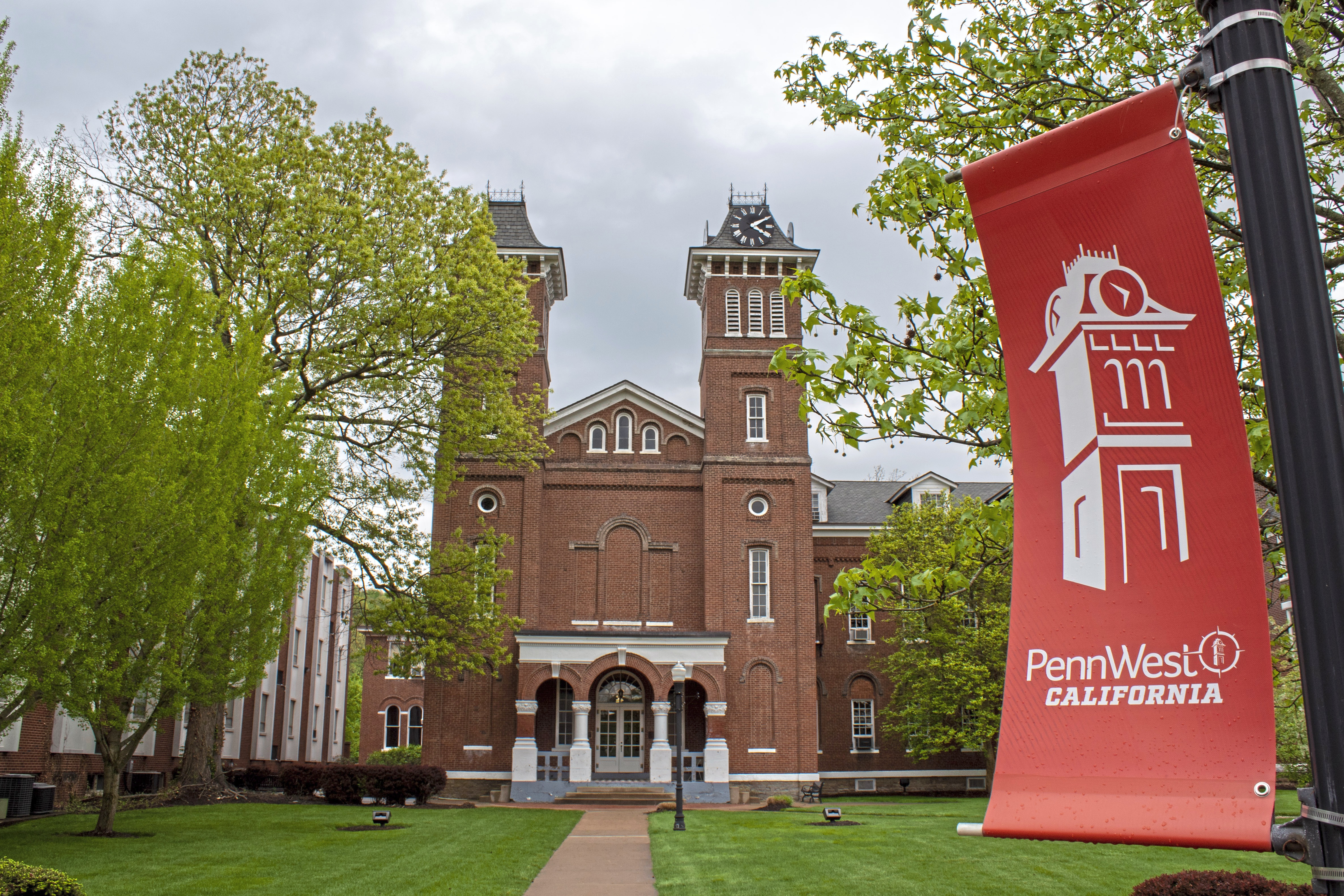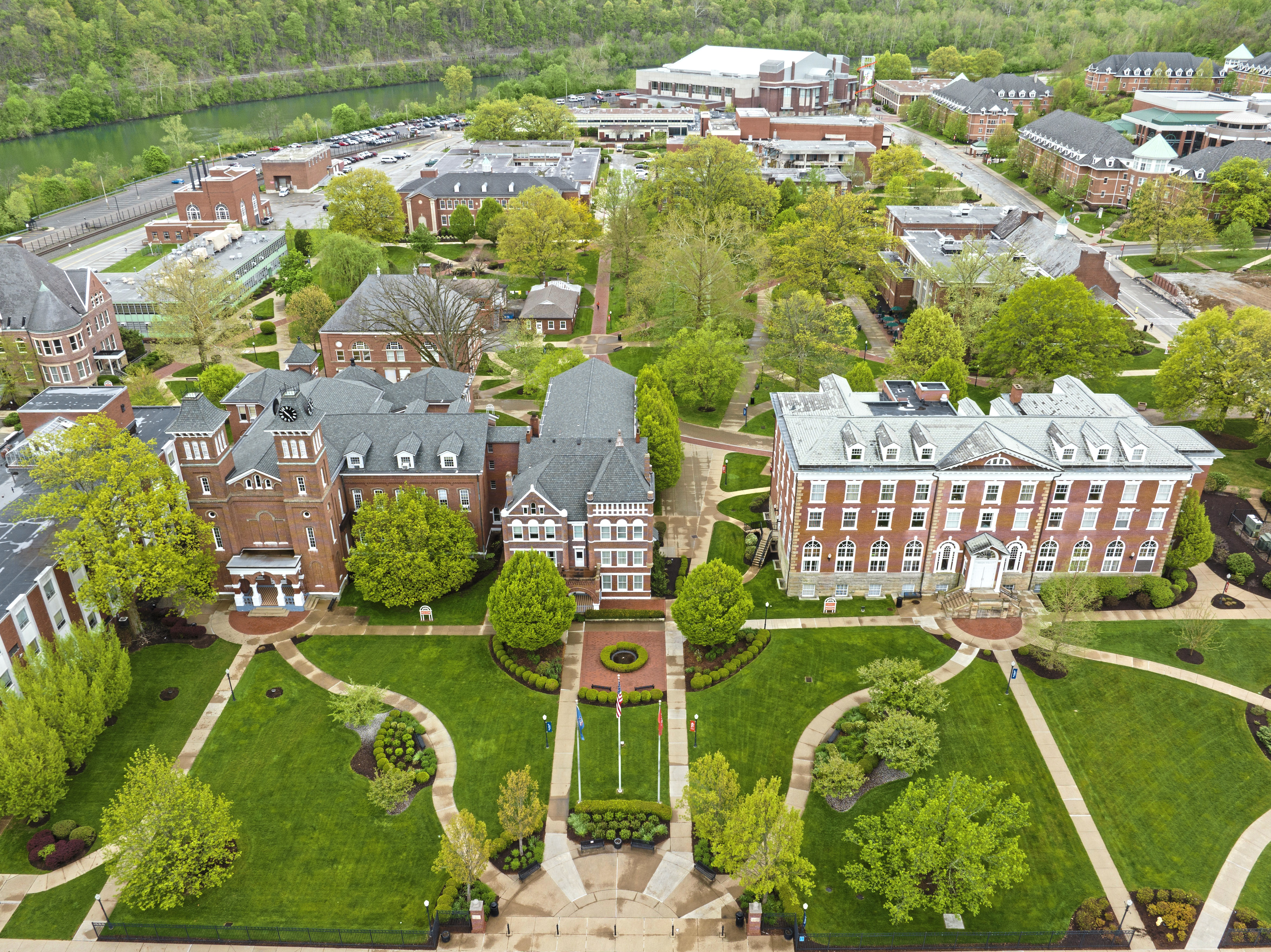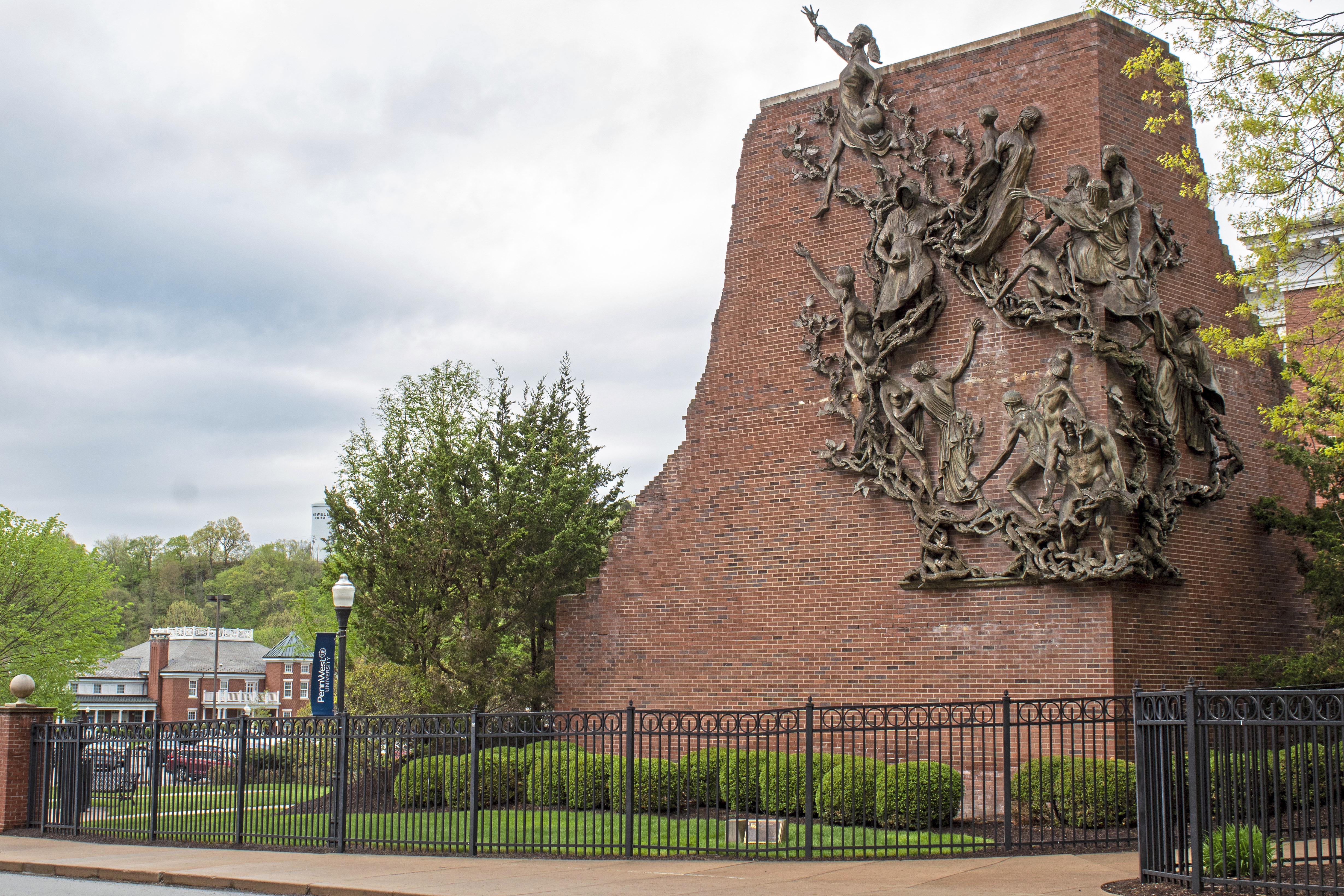
PennWest enrollment, funding remain challenges, but there’s optimism on the combined campuses
Step onto PennWest California’s campus, and the past and present collide.
California’s bright red banners are prominent across campus, along with PennWest’s blue signage. Campus police cars and building signs still read “California University of Pennsylvania” or “CalU,” while the sign welcoming folks to campus bears the PennWest name. Though the bookstore sells some PennWest California merch, CalU-branded T-shirts dominate the store.
It has been one year since California University of Pennsylvania merged with Edinboro University and Clarion University to become Pennsylvania Western University, more commonly known as PennWest. Brought on by years of declining enrollment and financial challenges, the consolidation aimed to salvage the three state system campuses by putting them under the same umbrella.
But a year into the merger, challenges remain. At the same time, the three campuses located hours apart reckon with a new identity while maintaining parts of their former selves.
Despite obstacles and growing pains, PennWest students and leaders with Pennsylvania’s State System of Higher Education remain hopeful about the university’s future.
“We are in a rut right now and everything is a big old mess,” PennWest Clarion senior Abigail Barrett said. “But I’m optimistic and I know that it will be a lot better for the students coming in.”
A new identity
Feelings about the merger are mixed on the California, Clarion and Edinboro campuses, PennWest students told the Post-Gazette. Some are eager to step into the university’s future, but others view the change as a deal breaker.
“I think that simple name change has strayed people away,” PennWest Clarion junior Gage Gray said. “They were more focused on [the name change] rather than what is included in that and what could come from it.”
When the state system announced its intent to merge the schools, it received strong opposition from some students, faculty and alumni. Mr. Gray, who studies biology/pre-med and participates in student government, said he knows of students who dropped out or transferred since the merger.
As PennWest fights to gain name recognition in the region, some students have difficulty explaining the new university’s name to others. Multiple people have mistaken Mr. Gray’s school for electric company West Penn Power. PennWest Clarion senior Abigail Barrett said her grandmother thought the name indicated a relation to Penn State.
But there have been positive changes, too.
Mr. Gray said friendships are forming between students at different campuses. Ms. Barrett, who studies psychology, believes the merger is fostering a “special unity” among California, Clarion and Edinboro.
“The connection of all three campuses has been really, really strong,” she said.
Campuses are still trying to maintain their individual identities, too. Unique campus colors, logos and mascots survived the merger.
Further distinction is perhaps best exemplified in sports. The university has said it plans to continue campus athletics in separate programs.
And when seniors graduate this spring, they will receive a diploma with their campus name featured more prominently than the name Pennsylvania Western University. Ms. Barrett and other PennWest Clarion students signed a petition urging the university to feature campus names more prominently.
That’s special for students like Ms. Barrett.
“I entered here as a Clarion student,” she said.
The merger was initially “scary” to many students, said Sydney Cochran, a PennWest California sophomore. But Ms. Cochran believes university transparency and new opportunities show “a lot of positives.”
“I think that a lot of people are looking at it as a bad thing, and they’re not looking at the positives,” said Ms. Cochran, who studies history. “And there are a lot of positives that will come from this merger.”
Enrollment struggles
Speaking passionately to hundreds of lawmakers in May 2021, state system Chancellor Daniel Greenstein painted a bleak picture of the future of the struggling state system schools.
“This system is at a tipping point,” Mr. Greenstein said. “It is no longer sustainable in the current model.”
Efforts like the PennWest merger were meant to revive the state system’s floundering universities. But nearly two years after Mr. Greenstein’s speech — and one year after the merger — Mr. Greenstein lamented a “financially depleted” PennWest with “pretty disappointing enrollments.”
During PennWest’s first year, the university saw an 11.7% drop in enrollment — from 14,477 students at the California, Clarion and Edinboro campuses in fall 2021 to 12,780 students in fall 2022.
The schools’ decadelong enrollment downturn is even more pronounced: In fall 2012, the three campuses had 22,592 students total. Enrollment has since declined 43.4%.
“And we may see some disappointment going forward,” Mr. Greenstein told the Post-Gazette earlier this month.
Schools in Western Pennsylvania and beyond aren’t strangers to enrollment drops in recent years, but the California, Clarion and Edinboro campuses have been hit harder than some other regional universities. Fellow Western Pennsylvania state system school Slippery Rock saw a 3.7% decline between fall 2012 and 2022. The state system’s total enrollment fell 26.3% during the same time frame.
These challenges come as Pennsylvania faces a highly competitive and increasingly expensive higher education landscape. Tuition at the 10 state-owned universities is currently $7,716 per year, though state system officials have warned that without increased state funding this year, that price tag will likely jump.
To exacerbate these problems, schools across the United States are facing declines in traditional-age students as birth rates have fallen, said Joni Finney, an education consultant and the former director of the Philadelphia-based Institute for Research on Higher Education. According to state system data, only 7.8% of state system undergrads were non-traditional age, or 25 and older.
“[The state system] and a lot of institutions across the country have not adapted to reaching out to others who could benefit from post-secondary education,” Ms. Finney said. “That’s really the key to some of the public and private institutions in this state surviving.”
Academic changes
One motivator for the merger was academic program offerings, Mr. Greenstein said. Integration allowed California, Clarion and Edinboro to collectively offer more programs than they could sustain on their own.
Over the past year, PennWest has worked to blend the three campuses’ courses. Just weeks ago, the university’s council of trustees unanimously voted to reorganize PennWest’s six academic colleges into three. The newly created colleges are the College of Science, Technology and Business; the College of Education, Arts and Humanities; and the College of Health Sciences and Human Services.
PennWest spokeswoman Wendy Mackall called the college reorganization “an evolution in the integration process.” The reorganization process will continue this summer.
“The streamlined college structure will allow faculty and staff to collaborate more readily across disciplines, expanding learning opportunities for students,” Ms. Mackall said via email. “It will allow us to communicate more frequently, consistently and transparently as our university evolves.”
No faculty layoffs occurred as a result of the PennWest integration, Ms. Mackall said. Retirement incentives were offered systemwide, however. GoErie reported in June that more than 300 positions at the three PennWest campuses were eliminated while over 400 faculty and staff members retired.
PennWest students told the Post-Gazette that academic changes have both positively and negatively impacted the student body. Some students have difficulty enrolling in the courses they need to graduate, while others benefit from asynchronous courses taught by professors at other campuses.
Samantha McGreevey, a PennWest Edinboro senior, said one of her favorite professors teaches from the Clarion campus.
“I love her to pieces, and I would have never met her if the merger never happened,” said Ms. McGreevey, who studies social work.
Looking ahead
When Mr. Greenstein considers the future of PennWest — and the state system as a whole — he believes increased state funding is the key. The chancellor has asked state lawmakers to provide more money for the state system as it faces the potential tuition increase and $1.8 billion debt.
But Mr. Greenstein is confident PennWest will succeed. He said he sees a lot of “grit and determination” from the university community.
“I’m pretty optimistic,” he said. “It’s going to be a tough row to hoe, but … I don’t see how we can fail.”
And though many PennWest students are still adjusting to changes, the freshman class is excited to be part of the university, said Ms. McGreevey, who offers guidance to PennWest Edinboro freshmen as a community assistant.
“[The freshmen] didn’t know what it was like before [the merger]. They just know PennWest, and they love it here,” Ms. McGreevey said. “They’re all so optimistic toward the future. Seeing that’s the next generation for PennWest makes me very relieved.”





